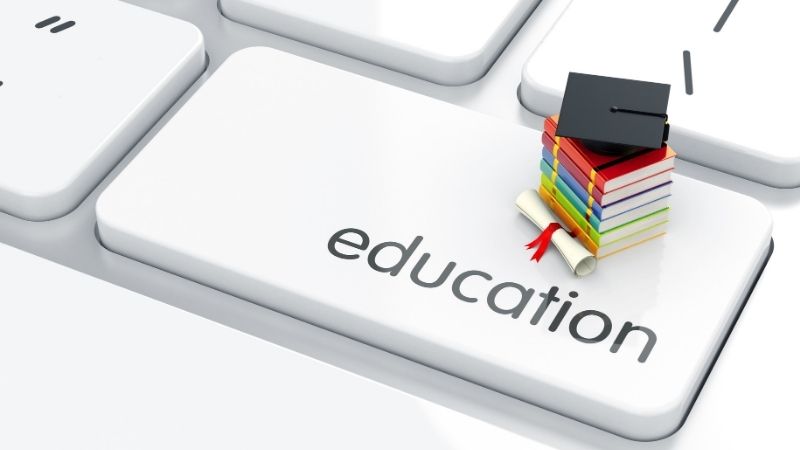
Navigating the dynamic landscape of edtech trends necessitates an exploration of the latest teaching tools, the role of AI and AR in education, adaptive learning technologies, and the gamification of learning.
This article delves into these innovative advancements in education technology with a knowledgeable, tech-savvy approach.
By harnessing the power of alliteration to create rhythm and flow in writing, this introduction aims to captivate an audience seeking freedom and insights into shaping the future of learning through edtech trends.
Key Takeaways
- Virtual classrooms, interactive whiteboards, tablets, and virtual reality headsets are some of the latest teaching tools in education that enhance remote learning, engagement, and collaboration.
- AI and AR technologies play a significant role in education by personalizing learning, analyzing data for instructional planning, overlaying digital information onto the real-world environment, and creating dynamic and interactive learning environments.
- Adaptive learning technologies provide customized learning experiences tailored to individual student needs, revolutionizing the educational landscape with advanced algorithms, data analytics, virtual reality integration, and collaborative learning opportunities.
- Gamification in learning enhances student engagement, motivation, problem-solving skills, collaboration, and provides instant feedback and progress tracking.
The latest teaching tools in education encompass a wide range of technological advancements designed to enhance instructional delivery and student engagement.
Virtual classrooms, one such tool, allow for remote learning and collaboration, breaking down geographical barriers and providing students with access to educational resources from anywhere in the world.
Interactive whiteboards are another innovative tool that promotes active learning by enabling teachers to present information in an engaging and interactive manner. These whiteboards can be used to display multimedia content, facilitate group discussions, and provide real-time feedback on student progress.
Exploring the Role of AI and AR in Education
AI and AR technologies have become increasingly prominent in educational settings due to their potential to enhance teaching and learning experiences.

AI is being utilized for personalized learning, allowing educators to tailor instruction based on individual student needs and preferences. This technology can analyze large amounts of data to identify patterns in student performance, providing valuable insights for instructional planning.
On the other hand, AR offers immersive classroom experiences by overlaying digital information onto the real-world environment. It enables students to interact with virtual objects and scenarios, enhancing their understanding and engagement in the learning process.
The integration of AI and AR in education holds great promise for creating dynamic and interactive learning environments that cater to diverse learner needs. These technologies pave the way for innovations in adaptive learning technologies, which will be discussed further in the subsequent section.
Innovations in Adaptive Learning Technologies
Incorporating advanced algorithms and data analytics, adaptive learning technologies have revolutionized the educational landscape by providing customized learning experiences tailored to individual student needs. These technologies utilize personalized learning algorithms to analyze students' strengths, weaknesses, and learning preferences, allowing for targeted instruction and support.
One of the latest innovations in adaptive learning is virtual reality integration. By immersing students in interactive virtual environments, educators can create engaging and immersive experiences that enhance understanding and retention of complex concepts. Virtual reality also offers the opportunity for collaborative learning, as students can interact with their peers in a shared virtual space.
The integration of virtual reality with adaptive learning technologies holds great promise for enhancing student engagement and achievement. As these technologies continue to evolve, they empower educators with innovative tools to meet the diverse needs of learners in a rapidly changing world.
Harnessing the Power of Gamification in Learning
Harnessing the power of gamification in learning involves leveraging game elements and mechanics to enhance student engagement, motivation, and learning outcomes. Gamification techniques have gained popularity in educational settings due to their potential benefits.

By incorporating elements such as points, levels, leaderboards, and rewards into the learning process, educators can create an immersive and interactive environment that encourages active participation and fosters a sense of achievement. This approach taps into students' natural inclination towards competition and challenges, making the learning experience more enjoyable and motivating.
Furthermore, gamified learning can promote problem-solving skills, critical thinking abilities, collaboration among peers, and perseverance in overcoming obstacles. It also provides instant feedback to learners on their progress and performance, enabling them to track their growth and make necessary improvements.
Overall, harnessing gamification in education has the potential to revolutionize traditional teaching methods by offering a dynamic and engaging platform for knowledge acquisition.
Shaping the Future of Learning With Edtech Trends
As technology continues to evolve, the integration of digital tools and platforms into educational practices has become increasingly prevalent. This shift towards edtech trends is shaping the future of learning in exciting ways.
Personalized learning platforms offer individualized instruction tailored to students' needs and preferences, allowing for a more engaging and effective learning experience.
Virtual reality in education provides immersive environments that enhance understanding and enable experiential learning.
Additionally, AI-powered tools can analyze vast amounts of data to provide personalized feedback and support to learners.

These innovations are revolutionizing traditional teaching methods, empowering educators to create dynamic and interactive lessons that promote critical thinking, collaboration, and creativity.
As we navigate this dynamic landscape of edtech trends, we embrace a future where freedom in learning is fostered through innovative technologies.
Frequently Asked Questions
What ARe the Specific Benefits of Using AI and AR in Education?
The benefits of AI and AR in education include personalized learning experiences, improved engagement and motivation, enhanced content delivery, and the ability to simulate real-world scenarios. These technologies are shaping the future of education by revolutionizing teaching methods and promoting learner-centered approaches.
How Do Adaptive Learning Technologies Personalize the Learning Experience for Students?
Personalized learning approaches involve the use of adaptive learning systems to tailor educational experiences according to individual student needs. These technologies adapt content, pace, and assessment methods to optimize student engagement and achievement.
What Are Some Examples of Gamification Strategies Used in Learning?
Examples of gamification strategies in learning include leaderboards, badges, and leveling up. These strategies motivate students by providing a sense of achievement and competition. The benefits of gamification in education range from increased student engagement to improved retention and problem-solving skills.
How Can Edtech Trends Shape the Future of Education?
Edtech trends have the potential to shape the future of education by offering implications of virtual classrooms in remote education and integrating technology into curriculum design for enhanced learning outcomes.
Challenges and limitations may arise with the implementation of teaching tools and technologies in the classroom. These include issues related to access, equity, privacy, data security, technological infrastructure, teacher training, and pedagogical integration.

 Careers in EducationElementary EducationHigh School EducationEducational TechnologyTeaching StrategiesSpecial EducationPrivacy PolicyTerms And Conditions
Careers in EducationElementary EducationHigh School EducationEducational TechnologyTeaching StrategiesSpecial EducationPrivacy PolicyTerms And Conditions
